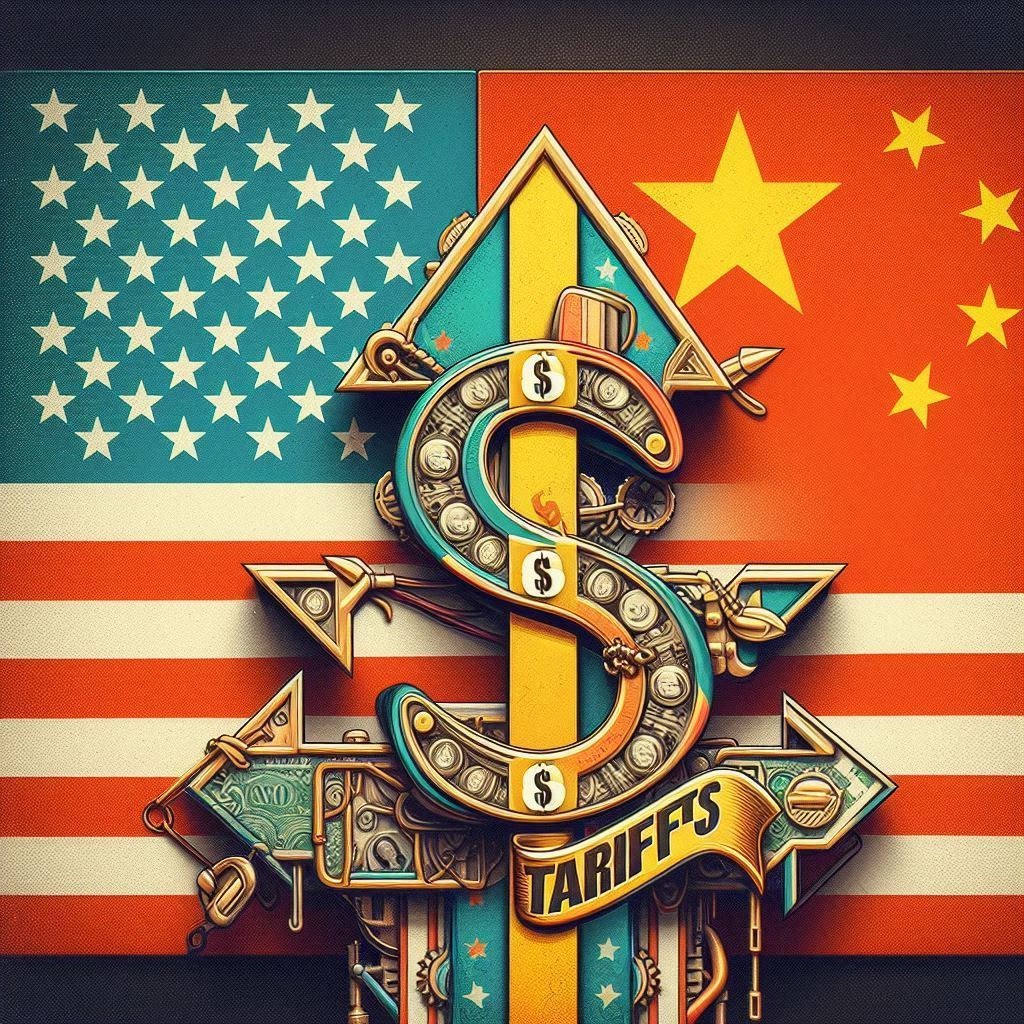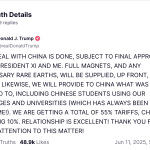What’s Happening in U.S. Trade Talks with China and India?
This year, tariff changes have been a major thing to deal with for businesspeople who import goods from Asia. Many are hoping for the Trump Administration to complete trade deals soon to bring predictability and stability to the situation.
There is some news regarding trade deal talks with two important U.S. trading partners: China and India. What is that news, and how useful is it for shippers?
Let’s dig in…
Trade Negotiations with China
Trade talks between the U.S. and China continued in London today.

High-ups in the Trump Administration – Commerce Secretary Howard Lutnick, Trade Secretary Scott Bessent, and Trade Representative Jamieson Greer – are negotiating with China’s vice premier and lead economic representative He Lifeng.
I’ve seen a few misleading headlines, making it sound like the negotiations are going poorly by cherrypicking President Trump’s words “China’s not easy” from when he was speaking to the press yesterday about what he’s hearing from the talks. However, he said that directly after saying, “We’re doing well with China.” President Trump’s message was that he’s getting “good reports” from the negotiations.
But no matter what’s said or reported about the talks, it should be expected for them to have ups and downs. Making a trade deal between any two countries is no easy task. A trade deal between the U.S. and China should be especially difficult with their adversarial relationship as well as their differences in ideology and governance.
The most important thing is that negotiations are happening. We’re about a third of the way into the 90-day negotiation window during which the reciprocal and retaliatory tariffs between the U.S. and China are paused. Ideally, a full new deal will be reached before the 90 days are up when tariffs could potentially return to 145% on Chinese goods imported by the U.S. and 125% on U.S. goods imported by China.
Of course, if talks are still happening but a deal hasn’t yet been reached when the window closes, the 90 days could be extended. Who knows, it’s even possible a conflict could pop up between the U.S. and China that causes the window to be slammed shut early.
It does, at least, seem much less likely that something would happen for the over 100% tariffs to be put back in place before the pause is over than for the pause to be extended. For shippers, though, the 90-day window is the most predictable period for shipping between the U.S. and China. Importers and exporters who want to take advantage of the current lower tariffs but haven’t yet need to get shipping quickly.
There’s not much point in indulging in hypotheticals about when or even if a deal between the U.S. and China will happen. Heck, during President Trump’s first term, right before the Phase One Trade Agreement was reached, the dominant narrative and general thought seemed to be the deal wasn’t likely to happen. At this point, all we can do is wait for news to break of a deal. That could be this week. That could be two months from now. Or things could break down and we’d head back into the escalating tariffs of a trade war.
Trade Negotiations with India
Meanwhile, we’ve come to an end of about a week of trade negotiations between the U.S. and India.
Talks were held in India from June 4th until June 10th. The most important takeaway is a deal hasn’t been announced yet.
Manoj Kumar did report in a Reuters article, from unnamed sources in India, positive things about the negotiations:
“The negotiations held with the U.S. side were productive and helped in making progress towards crafting a mutually beneficial and balanced agreement including through achievement of early wins,” one of the sources said.
…
Both sides discussed increasing bilateral digital trade, by improving customs and trade facilitation measures, the sources said, adding that “negotiations will continue” for early conclusion of the initial tranche of the trade pact.
The article did include details about negotiations between the countries, including India resisting “U.S. demands to open its markets to wheat, dairy and corn imports, while offering lower tariffs on high-value U.S. products such as almonds, pistachios and walnuts” and India asking “the U.S to revoke its 10% baseline tariff,” which the U.S. opposed, “noting that even Britain was subject to this under its recent bilateral trade agreement.”
Kumar also reported in the article that India sought an exemption to President Trump’s 50% tariff on steel. It would be highly unlikely for the Trump Administration to grant that, as it particularly pointed out such exemptions undermined steel tariffs that were in place, allowing countries to dump steel in the U.S. through exempted countries.
There’s enough detail in the article to give credence to the expectation it puts forth for an interim agreement to be signed by the end of the month before the 90-day pause on reciprocal tariffs (separate from the 90-day window for China) expires. Adding to that likelihood is the positivity that a deal with India would come quickly that’s been out there for some time.
However, like I said when discussing trade talks with China, I’m not one for prognosticating when and if a deal will get done. An imminent trade deal with India sounds likely, and President Trump and Indian Prime Minister Narendra Modi did previously make a public agreement to complete a trade deal by this fall. But we do still have to wait for trade deal announcements. From Kumar’s article, the bilateral trade agreement between the U.S. and China should come in phases or tranches.
Conclusion
There’s no deal until there’s a deal. However, talk of a deal coming from India has enough credence to make one seem likely and soon. That’s good because the window is practically closed for importing from India while the “Liberation Day” reciprocal tariffs on those goods are paused. The window is open longer for the pause on the 145% tariffs on Chinese goods, but with only a couple months left, shippers who want to get in under it, particularly with ocean freight shipping, need to act quickly.
Trade negotiations with China are happening, but President Trump acknowledges the difficulty of making that deal, even when he sees those negotiations going well. No one is going to be able to tell the future to give a timeline on when a trade deal with China will happen. Trusting China to abide by such a deal, particularly after it abandoned the Phase One Trade Deal when Covid hit Wuhan and spread to the world. Shippers who are moving away from importing goods from China are not unwise.
India is a safer option at the moment. The likelihood, as reported, of an interim agreement by the end of the month and a larger bilateral agreement by the fall is good. Yet, there are issues India and the U.S. have to work through, and I’m not one to count my trade deals before they hatch.





